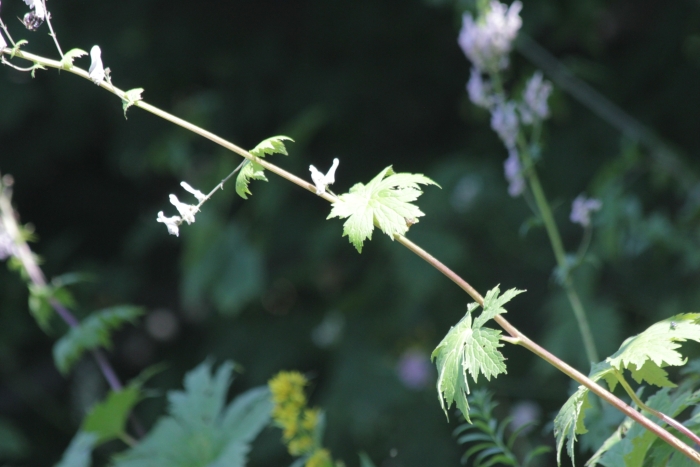Monkshood
(Aconitum orientale)
Monkshood (Aconitum orientale)
/
/

KAnatoliy
CC BY 4.0
Image By:
KAnatoliy
Recorded By:
Copyright:
CC BY 4.0
Copyright Notice:
Photo by: KAnatoliy | License Type: CC BY 4.0 | License URL: http://creativecommons.org/licenses/by/4.0/ | Rights Holder: KAnatoliy | Publisher: iNaturalist | Date Created: 2023-08-15T11:37:51-07:00 |

























Estimated Native Range
Summary
Aconitum orientale, commonly known as Monkshood, Leopard’s Bane, or Wolfsbane, is a perennial herb native to mountainous regions of Eastern Europe to Central Asia, often found in moist alpine meadows, forest clearings, and along streams, typically in calcareous soils. It grows at a moderate rate to a height of 2-4 feet (0.6-1.2 meters) and a width of 2-3 feet (0.6-0.9 meters). This plant is characterized by its deeply divided dark green leaves and its distinctive hooded blue or violet flowers, which are quite showy and bloom in the summer. The flowers are arranged in tall, narrow racemes and are known for their unique shape and striking color.
Monkshood is valued for its vertical accent and vibrant flowers in garden borders, woodland gardens, and cottage gardens. It is also used in traditional medicine, though with extreme caution due to its toxicity. In cultivation, it prefers partial shade to full sun and thrives in moist, well-drained soils rich in organic matter. While it tolerates medium draining clay or loam soils, it benefits from the addition of compost or other organic materials. Regular watering is important, especially during dry periods. Gardeners should be aware that all parts of the plant are highly toxic if ingested, and it can cause skin irritation upon contact. Therefore, it should be handled with gloves and placed away from areas frequented by children and pets. There are no major disease problems, but it can occasionally suffer from crown rot if grown in poorly drained soils.CC BY-SA 4.0
Monkshood is valued for its vertical accent and vibrant flowers in garden borders, woodland gardens, and cottage gardens. It is also used in traditional medicine, though with extreme caution due to its toxicity. In cultivation, it prefers partial shade to full sun and thrives in moist, well-drained soils rich in organic matter. While it tolerates medium draining clay or loam soils, it benefits from the addition of compost or other organic materials. Regular watering is important, especially during dry periods. Gardeners should be aware that all parts of the plant are highly toxic if ingested, and it can cause skin irritation upon contact. Therefore, it should be handled with gloves and placed away from areas frequented by children and pets. There are no major disease problems, but it can occasionally suffer from crown rot if grown in poorly drained soils.CC BY-SA 4.0
Plant Description
- Plant Type: Herb
- Height: 2-4 feet
- Width: 2-3 feet
- Growth Rate: Moderate
- Flower Color: Blue
- Flowering Season: Summer
- Leaf Retention: Deciduous
Growth Requirements
- Sun: Full Sun, Part Shade
- Water: Medium
- Drainage: Medium
Common Uses
Border Plant, Butterfly Garden, Deer Resistant
Natural Habitat
Native to mountainous regions of Eastern Europe to Central Asia in moist alpine meadows, forest clearings, and along streams, typically in calcareous soils
Other Names
Common Names: Leopard’s Bane, Wolfsbane
Scientific Names: , Aconitum orientale, Aconitum galeatum, Aconitum galeatum, Aconitum lasiostomum, Aconitum lycoctonum, Aconitum lycoctonum subsp. orientale, Aconitum lycoctonum var. orientale, Aconitum macrophyllum, Aconitum orientale var. chloranthum,
GBIF Accepted Name: